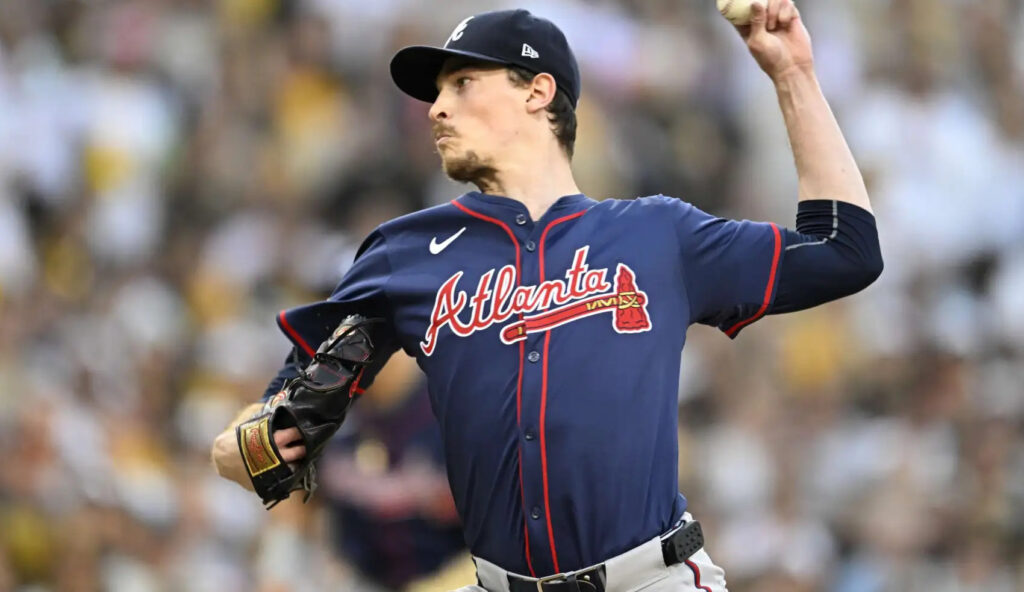
By Ryan Bologna
Feb. 10, 2025
New York Sports Nation
When the New York Yankees lost Juan Soto to the New York Mets, they swiftly pivoted and signed left-handed starting pitcher Max Fried to an eight-year, $218 million contract.
Other notable moves, like acquiring Cody Bellinger, Devin Williams and Paul Goldschmidt, were made to fill out the roster.
However, Fried is easily the most significant signing for the Yankees this offseason, and they are betting on him to essentially play the role of Robin to Gerrit Cole as the No. 2 starting pitcher.
Fried is a bit of a unique pitcher, so let’s take a deep dive into who Fried is and his outlook for 2025.
Fried comes to the Bronx after playing eight seasons with the Atlanta Braves. His career ERA+ mark of 140, according to Baseball Reference, puts him in the upper echelon of starting pitchers during his career. Fried, however, achieves these great results in a different way than other top pitchers. For example, Corbin Burnes and Blake Snell, the other two top starting pitchers who hit free agency this offseason, have historically thrived by striking out a lot of batters.
When looking at Fried’s Statcast numbers, his chase rate (28.9%), whiff rate (24.1%), and strikeout rate (23.2%) all rank around average. Not bad, but certainly not his calling card. Fried is elite when it comes to average exit velocity (86.3 mph), barrel rate (5.0%), hard-hit rate (34.6%) and ground ball rate (59.2%). He was in the 95th percentile for average exit velocity and the 96th percentile for ground ball rate in 2024. In short, Fried limits hard contact and keeps the ball on the ground. That is usually a good recipe.
When taking this into account, it is easy to see why the Yankees have prioritized defense this offseason, especially in the infield. Goldschmidt should be an upgrade at first base defensively, and the departure of Gleyber Torres fits this mold as well. To maximize the Yankees’ $218 million investment in Fried, strong infield defense is a requirement.
Fried boasts a unique fastball, which moves in on right-handed batters. It averages around 94 mph, so he does not rely on high velocity. He also features a cutter, slider, curveball and changeup predominantly. By not relying much on velocity and featuring a diverse pitch mix, many believe that Fried could age well over the course of his contract.
In 2024, Fried did miss some time due to left forearm neuritis, which can be a precursor to Tommy John surgery. That is a concern, but Fried has been mostly a reliable pitcher innings-wise in his career so far. In addition, pitchers like Zack Wheeler (2022) and Zac Gallen (2021) have suffered forearm injuries in the past without much further trouble since.
In 29 starts in 2024, Fried posted a 3.25 ERA, which is the highest mark he has had since 2019, when he had a 4.02 ERA, according to FanGraphs. He had ERAs of 2.48 and 2.55 in 2022 and 2023.
The Yankees would sign up for that level of performance from Fried in 2025, but there is reason to believe he could improve from last season.
Fried is usually a slow starter, so in the first few games of his season, he likely is not going to perform at his peak. After returning from his forearm injury, Fried took some time to get back into form once again. Posting a 3.25 ERA despite those stretches is impressive.
In addition to this, Fried’s changeup was not as good as it usually is in 2024. Hitter had xwOBA marks of .216, .206, and .213 against that pitch in 2021, 2022 and 2023, according to Statcast. In 2024, hitters had an xwOBA of .286 against Fried’s changeup. If 2024 proves to be an outlier and Fried regains the feel for his changeup that he had in prior seasons, his ERA could creep back towards 3.00.
As with any starting pitcher the Yankees sign, there is a question of their fit in Yankee Stadium. Luckily, Fried Truist Park has a Park Factor of 100 over the past three seasons, the exact same rating as Yankee Stadium. However, Yankee Stadium had a 119 home run factor, as opposed to Truist Park’s number of 105.
It comes as no surprise that Yankee Stadium is much more friendly for home runs, so Fried is likely to give up more than he has in the past. Still, the offensive environments are similar overall, and Fried’s skillset directly combats the most hitter-friendly aspect of Yankee Stadium.
As discussed above, Fried generates a ton of soft contact and ground balls. That is a good way to avoid giving up home runs in any ballpark. The numbers back that up, as Fried’s HR/9 marks have been at 0.81, 0.58, 0.81 and 0.67 over the last four seasons.
Fried is still likely to give up more home runs than before, but when comparing to the Yankees’ last big starting pitcher signing, Carlos Rodon, he is much better equipped to pitch in the Bronx. Rodon has HR/9 marks of 2.10 and 1.59 in his first two years with the Yankees, according to FanGraphs. He also had a ground ball rate of 34.6% in 2024, which was in the eighth percentile in all of MLB. Fried is essentially the opposite type of pitcher as Rodon.
The Yankees are heading into 2025 with arguably the best pitching staff they have had in a long time, and the addition of Fried is arguably the biggest reason why.